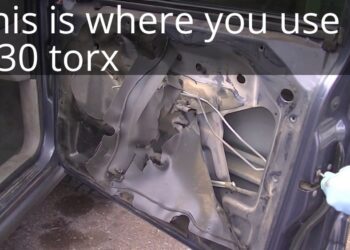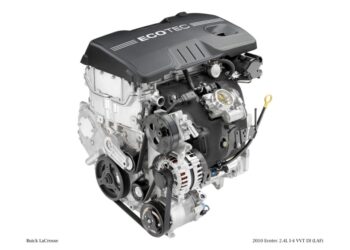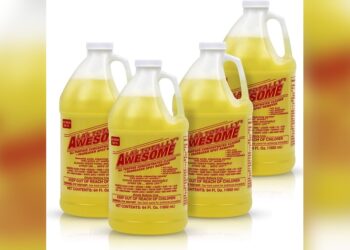Car overheating can be alarming. Sometimes, it goes back to normal on its own.
This puzzling issue often leaves drivers confused and worried. Why does this happen? Is it safe to keep driving? Understanding the causes is crucial to prevent potential damage. Your car’s cooling system works hard to keep the engine temperature stable.
When it fails, you might notice sudden spikes in the temperature gauge. These fluctuations can result from several factors. Addressing them early can save you from costly repairs. In this post, we’ll explore common reasons for this issue and how to fix them. Stay tuned to keep your car running smoothly and avoid unexpected breakdowns.

Credit: issuu.com
Common Causes Of Car Overheating
Car overheating is a common issue that many drivers face. Understanding the causes can help you prevent it. Here are some of the most common reasons why your car might overheat and then go back to normal.
One of the main reasons for car overheating is coolant issues. The coolant helps to regulate the engine’s temperature. If there is not enough coolant in the system, the engine can overheat. This can be due to a leak in the coolant system or improper coolant levels.
| Coolant Issue | Explanation |
|---|---|
| Leak | A hole in the coolant system causes a drop in coolant level. |
| Improper Levels | Incorrect coolant levels cause inefficient cooling. |
The thermostat regulates the flow of coolant in the engine. If the thermostat is stuck closed, it will prevent coolant from flowing. This can cause the engine to overheat. If the thermostat is stuck open, the coolant flows continuously, causing the engine to run cool.
- Stuck Closed: Prevents coolant flow, causing overheating.
- Stuck Open: Allows continuous flow, causing the engine to run cool.
The radiator helps to dissipate heat from the coolant. A malfunctioning radiator can cause overheating. Common radiator problems include clogs, leaks, and fan issues.
- Clogs: Debris or rust can clog the radiator, reducing its efficiency.
- Leaks: Radiator leaks can lead to coolant loss, causing overheating.
- Fan Issues: The radiator fan helps to cool the radiator. If the fan is not working, the radiator will not cool properly.
Coolant Issues
Car overheating can be a scary experience for any driver. One common cause of this problem is coolant issues. These issues can create a situation where the car overheats and then returns to normal. Understanding the root of these problems is key to preventing future occurrences.
Low Coolant Levels
Low coolant levels can cause your engine to overheat. The coolant absorbs heat from the engine and transfers it to the radiator. If there isn’t enough coolant, the engine can’t cool properly. Regularly check your coolant levels to avoid this issue. It’s a simple step that can save you from expensive repairs.
Coolant Leaks
Coolant leaks are another common cause of overheating. Leaks can occur in the radiator, hoses, or the coolant reservoir. When coolant escapes, the engine can’t maintain the proper temperature. Look for puddles under your car or a sweet smell, which can indicate a leak. Address leaks promptly to keep your engine running smoothly.
Improper Coolant Mixture
The right coolant mixture is crucial for your car’s cooling system. Most cars require a 50/50 mixture of coolant and water. If the mixture is off, it can affect the coolant’s ability to manage heat. Check your car’s manual for the correct ratio. Using the right mixture ensures optimal performance and prevents overheating.
Thermostat Problems
Experiencing a car overheating can be alarming. Sometimes, the issue is a thermostat problem. The thermostat regulates the engine’s temperature. If it malfunctions, your car might overheat and then cool down. Understanding common thermostat problems can help you identify the issue.
Stuck Thermostat
A stuck thermostat is a common issue. When it gets stuck closed, coolant can’t flow. This causes the engine to overheat quickly. On the other hand, if it gets stuck open, the engine may not reach its optimal temperature. Both conditions can harm your car’s performance.
Faulty Thermostat
A faulty thermostat might not open or close at the right times. This can cause the engine to overheat. It can also lead to inconsistent temperature readings. Faulty thermostats can wear out over time or due to improper maintenance.
Thermostat Replacement
Replacing a thermostat is often necessary to fix overheating problems. It’s a simple and affordable repair. If your car’s temperature fluctuates, consider checking the thermostat. A new thermostat can help your engine run smoothly and prevent future issues.

Credit: www.autonationmobileservice.com
Radiator Malfunctions
Radiator malfunctions can cause your car to overheat. These issues might lead to severe engine damage. Understanding the causes can help you address them quickly.
Clogged Radiator
A clogged radiator restricts coolant flow. Debris and dirt can block the passages. This reduces the radiator’s cooling efficiency. Regular cleaning can prevent clogs.
Radiator Leaks
Radiator leaks can cause coolant loss. This makes the engine overheat. Check for puddles under your car. A mechanic can help find and fix leaks.
Radiator Replacement
Sometimes, a radiator needs replacing. Old radiators may fail over time. If overheating persists, replacement might be necessary. A professional can assess the situation.
Engine Fan Issues
Dealing with car overheating can be stressful. One common cause is engine fan issues. The engine fan plays a vital role in cooling your car. If the fan isn’t working properly, your engine can overheat and then go back to normal. Let’s explore common engine fan issues.
Faulty Fan Motor
The fan motor drives the engine fan. If the motor fails, the fan won’t work. This can cause your engine to overheat. You might hear strange noises from the fan area. Replacing a faulty fan motor can fix this issue.
Damaged Fan Blades
Fan blades move air to cool the engine. Damaged or broken blades can’t move air effectively. This can lead to overheating. Inspect the fan blades for cracks or breaks. Replace any damaged blades to ensure proper cooling.
Fan Relay Problems
The fan relay controls the power to the fan motor. A faulty relay can stop the fan from working. This causes the engine to overheat. Check the relay for signs of wear or damage. Replacing a bad relay can restore normal fan operation.
Water Pump Failures
When your car overheats and then goes back to normal, it might be due to water pump failures. The water pump is crucial for maintaining the engine’s temperature. If it fails, your engine can overheat. Let’s explore the common issues with water pumps.
Pump Leaks
Pump leaks are a frequent issue with water pumps. Leaks can occur due to worn-out seals or gaskets. When a pump leaks, it loses coolant. This leads to insufficient cooling and overheating.
Signs of a leaking pump include:
- Puddles of coolant under the car
- Low coolant levels
- High engine temperature
Worn-out Bearings
Worn-out bearings can cause the water pump to fail. Bearings allow the pump to rotate smoothly. Over time, bearings can wear out. This leads to wobbling and noise.
Symptoms of worn-out bearings include:
- Squeaking or grinding noises
- Loose water pump pulley
- Frequent overheating
Pump Replacement
Pump replacement may be necessary if your water pump fails. Replacing a water pump involves removing the old pump and installing a new one.
Here are steps for pump replacement:
- Drain the coolant
- Remove the serpentine belt
- Unbolt and remove the old pump
- Install the new pump
- Refill the coolant
- Check for leaks
A new water pump ensures your engine stays cool and prevents overheating. Always consult a professional mechanic if unsure.
Signs Your Car Is Overheating
Car overheating can be a serious problem. Early detection is key to preventing damage. Knowing the signs can save you from costly repairs. Your car gives several warnings when it overheats.
Temperature Gauge Reading
The temperature gauge is a clear sign. It shows the engine’s temperature. If the needle moves to the red zone, your car is too hot. Pay attention to this gauge while driving.
Steam From Engine
Steam coming from under the hood is a major sign. It usually means the coolant is boiling. This steam looks like smoke. Do not ignore it. Stop the car and turn off the engine.
Unusual Noises
Strange sounds can also signal overheating. A ticking noise may mean the oil is too hot. A hissing sound could be the coolant leaking. Listen for these noises. They often accompany other signs.
Preventive Measures
Car overheating can lead to serious engine damage. Preventive measures help avoid overheating issues. Regular checks and simple maintenance tasks can keep your car running smoothly.
Regular Maintenance
Regular maintenance is key to preventing car overheating. Schedule routine oil changes and inspections. Check the engine components for wear and tear. Replace worn parts promptly. Clean the engine bay to prevent dirt build-up.
Coolant System Checks
The coolant system plays a vital role in engine cooling. Check the coolant level regularly. Top up if it’s low. Inspect the coolant for contamination. Replace it if necessary. Examine hoses and connections for leaks. Replace damaged parts immediately.
Monitoring Temperature Gauge
Keep an eye on the temperature gauge while driving. It shows the engine’s temperature. If the needle moves to the red zone, stop the car. Let the engine cool down. Avoid driving with an overheated engine. Regularly check the gauge to spot issues early.
What To Do When Car Overheats
Experiencing a car that overheats can be stressful. The engine temperature gauge rises, and you worry about potential damage. Knowing what to do when your car overheats is crucial. Follow these steps to ensure safety and prevent further issues.
Pull Over Safely
When your car overheats, pull over safely to the side of the road. Turn on your hazard lights to alert other drivers. Find a safe spot away from traffic.
Waiting a few minutes before turning off the engine can help the coolant circulate, reducing the engine temperature.
Turn Off The Engine
Once safely parked, turn off the engine. This prevents further damage to your vehicle. Allow the car to cool down for at least 15 minutes.
Do not attempt to open the hood immediately. The steam and hot coolant can cause burns.
Check Coolant Levels
After the car has cooled down, carefully open the hood. Locate the coolant reservoir. Check the coolant levels.
If the level is low, add more coolant. Use a 50/50 mixture of coolant and water.
If you are unsure about the coolant type, consult your owner’s manual. If the coolant seems dirty or rusty, it may indicate a larger problem.

Credit: www.youtube.com
Frequently Asked Questions
Why Is My Car Overheating Then Going Back To Normal?
Your car might overheat and then cool down due to a faulty thermostat. It could also be a cooling system issue.
Can A Low Coolant Level Cause Overheating?
Yes, low coolant can cause your car to overheat. Always check and refill coolant levels to avoid this.
What Should I Do If My Car Overheats?
Stop driving immediately. Let the engine cool down. Check coolant levels. Call for help if needed.
How Can I Prevent My Car From Overheating?
Regular maintenance is key. Check coolant levels, inspect the radiator, and ensure the thermostat works properly.
Is It Safe To Drive A Car That Overheats?
No, it’s not safe. Overheating can damage the engine. Stop the car and address the issue immediately.
Conclusion
Address car overheating issues promptly. Regular maintenance prevents costly repairs. Monitor coolant levels. Check your thermostat regularly. Ensure your radiator functions correctly. Small actions save big troubles later. Stay vigilant and keep your car healthy.

















